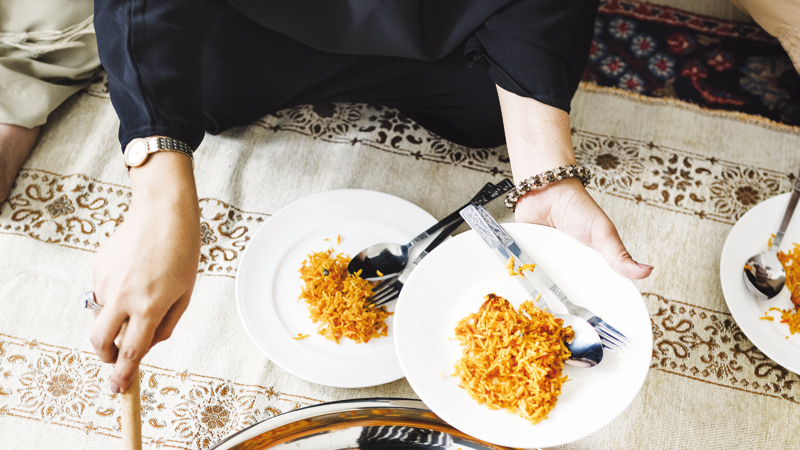

A plethora of Arab foods has conquered the dining tables of the people of India, a vast number of which has been living abroad and a majority in Gulf countries. It’s then no wonder that Oman’s own shawarma, mandi, makboos, falafil, khubuz, hammous, fattoush, tabouleh, kabsa, maqlooba and saffron rice have become an inevitable delicacy for special occasions.

Over the past decade, several of Oman’s as well as Arab foods have made to Indian weddings and other family gatherings.
“Arab foods have an equal demand along with Indian foods and we are capable of catering to both”, Rahman, a hotelier in Kozhikode, a place known forMalabar foods, said. Rahman has recently appointed an Arab cook who has experience working in Saudi Arabia in the past.
“India has a varied richness in gastronomic delights and their recipes have a global fan following,” says Shahjahan, who has authored a paper in ‘Indo-Gulf relations’ as part of his thesis for Kozhikode University.
“If one finds a number of similarities than contrasts in the lifestyles, eating habits, familial bonds and gastronomic connections, it’s no longer a wonder,” he added.

Some star hotels in metros have a wide selection of Arabic food on their menu for a long time but they were often expensive for a commoner.
Thus the array of Arabic restaurants springing all over the major cities in the states of Kerala, Andhra Pradesh, Telangana, Tamil Nadu and Karnataka are just natural progression of things.
While some existing eateries have included Arabic dishes into their menus, others went as far as decorating their restaurants with Arabic elements.
Some even have the ‘sofrah’ which is the traditional sitting mats that help people sit comfortably on the floor and share food from the same large platter — an attraction for the visiting Arab tourists as well as Indians living abroad.
Hyderabad, which was once ruled by Muslims, leads in offering Arabic food to its residents and tourists. The historic city is also home to Hadhrami Arabs (from Yemen) whose culinary influences are distinctly visible.

The old city of Hyderabad, part of the southern state of Andhra Pradesh is a foodie‘s paradise with a good number of restaurants rustling up Arabian delicacies.
Barkas and Yerrakunta suburbs, a 20-minute drive south of Charminar looks like a mini-Arab locality with hotel signage in Arabic greeting the visitors.
“It all started with Shawarma, the rotisserie chicken/mutton warp, which led the march some 10 to 15 years ago and is followed by other delicacies like Mandi and Makboos”, says Shaad Hasan Damudi, owner of the famous Alibaba café and restaurant, Bangalore.
“We serve popular rice dishes like kabsa, maqlooba and Egyptian koshari apart from Arabian grills, mezzeh and shawarma. Indians have developed a great taste for Arabia cuisine”, he added.
The love for Arabic foods have reached greater heights in places like Malabar region of Kerala, where mandi has replaced the traditional biryani in many weddings and festive occasions. Though the menu is not the exact replica of the quintessential Arabic food, yet the taste is fairly close.
According to statistics, more than 16 million Indians are living outside of their country, with an annual growth rate of 7 per cent. GCC is home to around 7 million expatriate Indians.
In Oman alone, Indians constitute almost 20 per cent of Oman’s total population of 4 million plus and they are the largest expatriate community in the Sultanate. There are 448,000 Indian migrants working and living in Oman. From these figures, Indians’ obsession with the Middle Eastern food comes as no surprise.
(With inputs from Aftab Husain Kola in Bangalore)
Oman Observer is now on the WhatsApp channel. Click here



